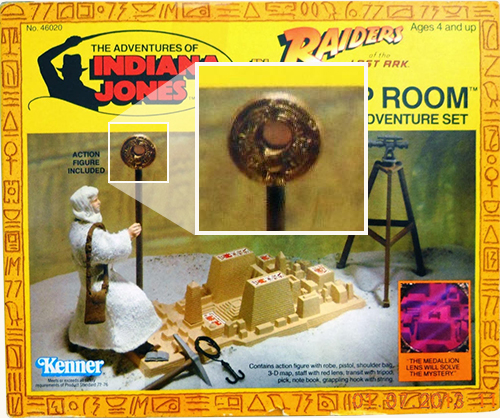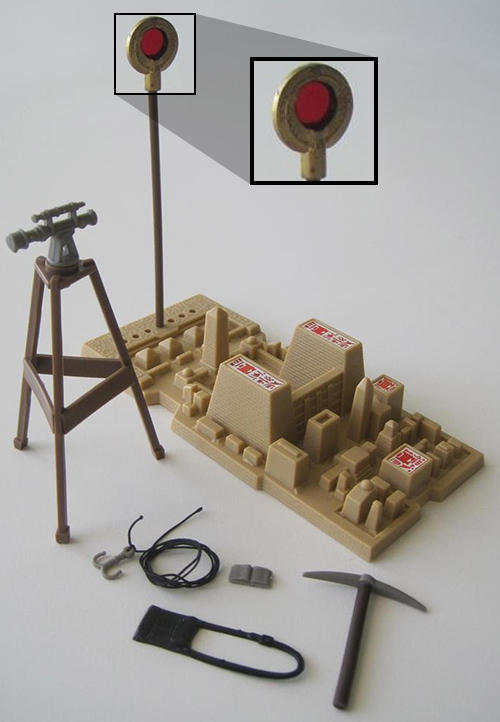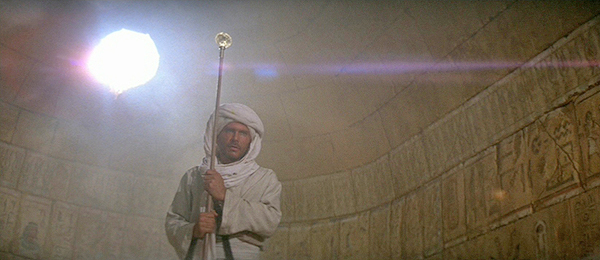
“Its a worthless bronze medallion, Marion.” —Indiana Jones
Well, as it turns out, Indy was underplaying it a bit to get what he was after. The Headpiece to the Staff of Ra is actually the key—when both sides are used—to finding the exact location of the Well of the Souls where the Ark of the Covenant is kept.
Site contributor, Dr. David West Reynolds discovered that the Headpiece’s design was based on earrings found in King Tut’s tomb by archeologist Howard Carter in 1922. David also was the first to realize that the wings of Ra on the headpiece contain the Ark Cherubs.
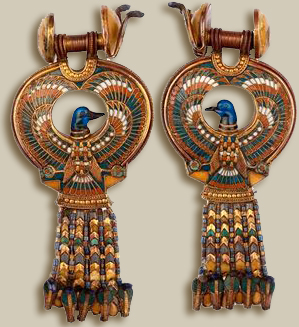
There are actually two Headpieces used in the film. IndyGear’s Tennessee Smith discovered that they were designed by two different artists. The first is commonly referred to as the Raven Bar Headpiece (sometimes Marion’s Headpiece) and is featured in most of the Elstree scenes—the Nepal scenes and in the Map Room scene where Indy places it on the Staff of Ra, but not in Imam’s deciphering scene. This Headpiece was designed by Ron Punter. It is also used as the reference to the scars burned into Toht’s hand.
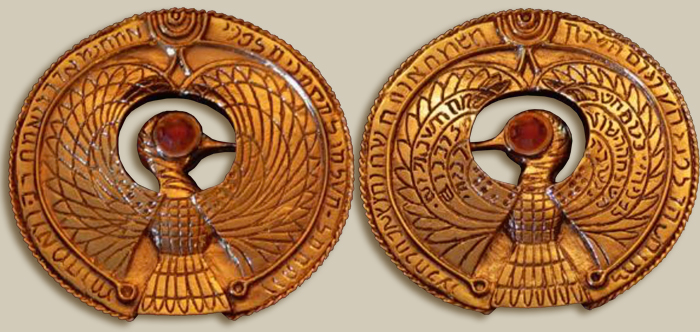
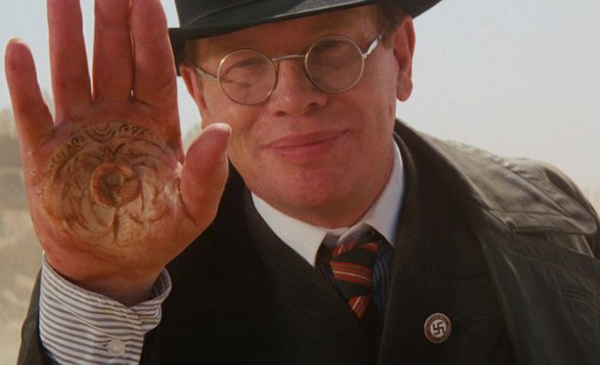
Punter’s design features a bird sculpt with large wings, a flatter body and tail feather. It has significantly more text than the second Headpiece, with more Hebrew writing around the edges and also in the wing feathers on the back of the prop.


The second, more commonly referenced Headpiece is first featured on Sallah’s rooftop then deciphered by Imam while Indy’s monkey is off having a fateful snack. The headpiece (Dimensions: 9 x 1 x 11cm) was sculpted by Barry Minot. It features less text around the edges of the prop but more detailing in the body and feathers of Ra’s wings. It also shows the Ark Cherubs at the base of the wings where Hunter’s featured a series of dots.
Malcolm Page was Works Manager at Norank Engineering (based at Elstree Studios) during the production of the film. The headpiece was cast by the studio and later machined and finished at the Norank facilities.
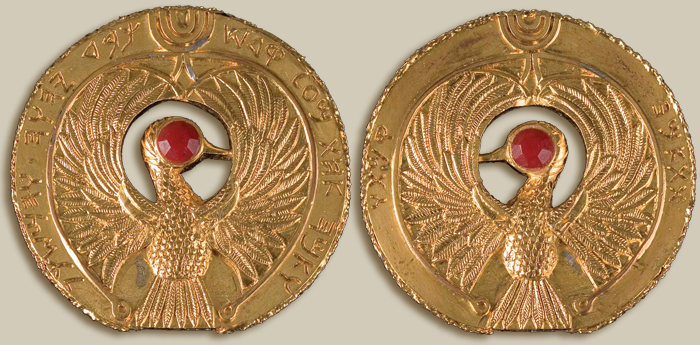
IndyGear site contributors, Indy Magnoli and Dr. Nebraska S. were among the first to translate the writing around the Imam Headpiece. In translating the text around the prop, its worth noting that the prop maker used the correct paleo-Hebrew script. Though in the film, Imam translates the sides backwards to what shown when he is speaking. Its likely either the lines or the film were transposed.
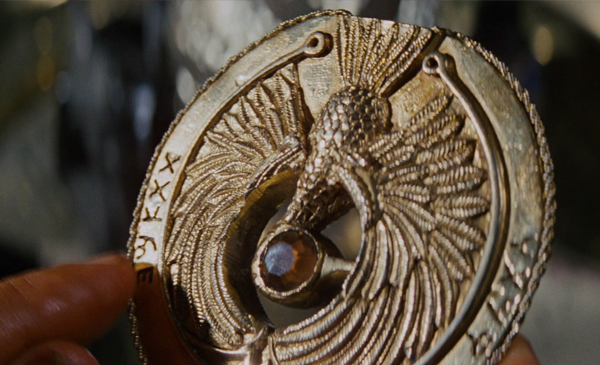
The shorter side of the prop should be considered the first side to read and is a bit tricky because the first word is not exactly a word:
תתאמה קמתו
tt’mh qmtw
Basically, the “tt” shouldn’t be there, and the ‘mh is the word for “cubit” that appears on the other side. The “tt” could be just a filler for the number, such as saying “xx cubits.” Consonants in Hebrew are used for numbers, but in this case the number would be 400. Another possibility is if the headpiece is using the Ugaritic form of the cardinal 6, which is tt. A lesser possibility takes into account that in later periods, the š becomes a t, and š(ē)š is the Hebrew word for “six”, so perhaps it was changed to t(ē)t for “six” (which would make it very similar to what its related Semitic language of Ugaritic has for the word for “six”, as mentioned above).
The reason it makes sense that the ‘mh means “cubit” here is because the following word qmtw means “you raised it.” So, with that as a thought process, the translation would be “You raised it xx/6 cubits.”
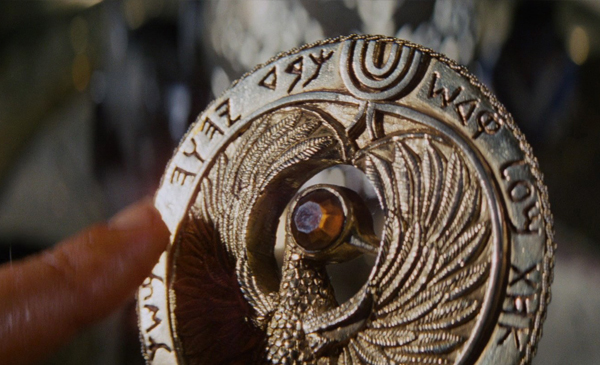
ואמה אחת מעל קדש
כבד יהוה והמשׁכן
w’mh ’ḥt m‘l qdš
kbd YHWH whmškn
“and one cubit from upon to sanctify— to honor—YHWH and the abode”
or
“and one cubit from above to sanctify the glory of YHWH and the abode”
A few more items of note to the Headpiece prop:
When Toht burns his hand, the bird on the headpiece is upright with the beak facing to the left. But, the burn on his hand has the beak facing to the right (and the bird is upright when it should have been upside-down). The positioning of bird and the burned inscription seems to more closely resemble the ‘Jehovah’ side. And that’s the side, according to the movie, the Nazis did not know about.
Contrary to what many people think, the crystal in the center of the Headpiece is amber, not red. Although some shots of the crystal in the film appear red, there are not currently any photographs of the prop to support this. IndyGear’s Tennessee Smith thinks that much like the blue-coated Hoth Han figure, the confusion over the crystal color might be traced back to the original Kenner Map Room Adventure Set, produced in 1982. Even though the box art featured an amber center to the Headpiece, the toy’s key feature was a Staff and Headpiece with a red plastic center which showed the location of to the Well of Souls.
